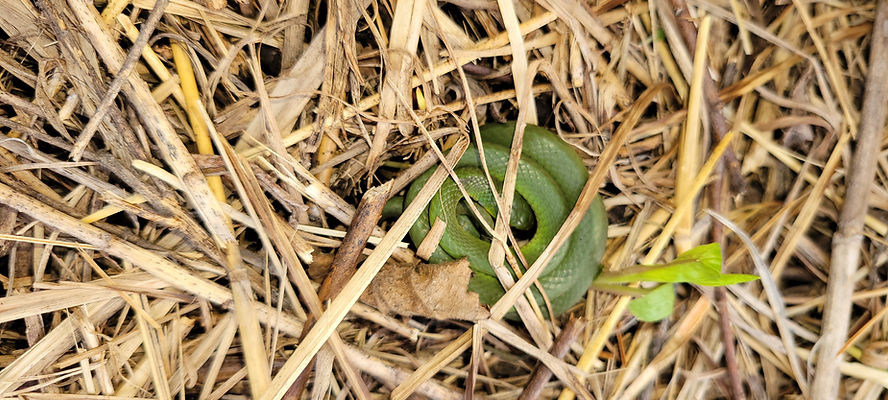
Recursos
Becas para estudiantes
Apply for the Brodman Student Travel Award to help offset costs of traveling to the KHS meeting in November!
This one-time grant ($230) aims to offset transportation costs associated with traveling to present at the 2025 KHS Conference, co-hosted by MWPARC. Applicants must be an enrolled student or have graduated within the last year, be a MWPARC member, be a U.S. citizen or resident alien, and be presenting at the conference. You can find more details in the application document linked below.
Applications are due October 22nd!
Please complete the application document and submit it to this Google Form: https://forms.gle/ZUuszD8Ar3bTqFvG7

Congratulations to the 2025 MWPARC Travel Grant: Fueling Student Field Experiences recipients!
Donovan Capet (recent graduate; Aurora University)
Caleb Krueger (graduate student; Michigan State University)
Tayci Sullivan (graduate student; Southern Illinois University)
Kevin Green (undergraduate; Eastern New Mexico University)

Midwest PARC ofrece una beca de viaje a los estudiantes para ayudar a compensar los costos de transporte asociados con la participación en el trabajo de campo herpetológico con un investigador experimentado. ¡En 2021, se otorgaron 12 becas ($ 100) a estudiantes de la región del Medio Oeste! Consulte a continuación los detalles de la solicitud y para leer los informes presentados por los beneficiarios de subvenciones anteriores .
Ya no aceptamos becas de viaje para la temporada 2021.
¡Estén atentos para información sobre premios futuros!

2024 Travel Grant Recipients
_JPG.jpg)
Destinatario 2021: Katherine Brandewie
Click here to read about Kayla's work in snake ecology in the Midwest.
Image description: An Eastern Foxsnake resting in the grass.

Destinatario 2021: Katherine Brandewie
Click here to read about Kevin's research with Wall Lizards in Ohio.
Image description: An invasive Wall Lizard (Podarcis muralis).

Destinatario 2021: Katherine Brandewie
Click here to learn about Alyssa's efforts to monitor Four-toed Salamanders in Minnesota using eDNA.
Image description: Alyssa filters water samples for environmental DNA while in the field.

Destinatario 2021: Katherine Brandewie
Click here to hear about Grace's research with Blanding's Turtles in Missouri.
Image description: A Blanding's Turtle with a transmitter attached to its carapace.
_JPG.jpg)
Destinatario 2021: Katherine Brandewie
Click here to learn about Luke's efforts to survey for invasive herps using eDNA.
Image description: A Red-eared Slider (Trachemys scripta elegans) and a Painted Turtle (Chrysemys picta) bask on a log.
%20-%20Kerri%20Beers.jpg)
Destinatario 2021: Katherine Brandewie
Click here to hear about Kerri's work with ranid frogs and chytrid in Minnesota.
Image description: Kerri and a team of collaborators swab frogs for chytrid fungi.
2023 Travel Grant Recipients
_HEIC.png)
Destinatario 2021: Katherine Brandewie
Click here to read about Benjamin's work with Kirtland's Snakes (Clonophis kirtlandii) in central and northern Indiana.
Image description: A Kirtland's Snake (provided by Benjamin)

Destinatario 2021: Katherine Brandewie
Click here to read about Caley's work with spotted turtles in Northern Michigan.
Image description: A Spotted Turtle (provided by Caley)

Destinatario 2021: Katherine Brandewie
Click here to read about Shania's work with salamanders and habitat drying events.
Image description: An ambystomatid salamander from their mesocosms (provided by Caley)
2022 Travel Grant Recipients

Destinatario 2021: Katherine Brandewie
Click here to read about Joey's work with Blanding's Turtles.

Destinatario 2021: Katherine Brandewie
Click here to read about Samantha's work with wetland drying and amphibians.

Destinatario 2021: Katherine Brandewie
Click here to read about Stephanie's work with phenotypic plasticity in amphibians.
2021 Travel Grant Recipients

Destinatario 2021: Katherine Brandewie
Click here to read about Katie's work with turtle communities in a large urban wetland complex in Fort Wayne, Indiana.
Note: Details regarding field sites have been removed to protect those populations of amphibians and reptiles.
